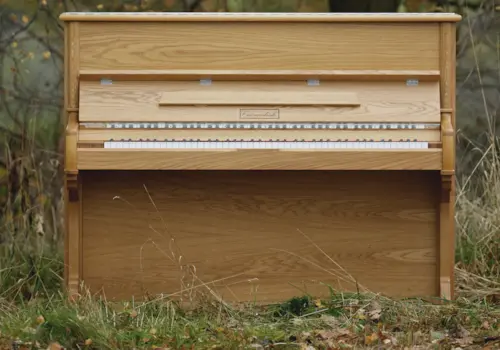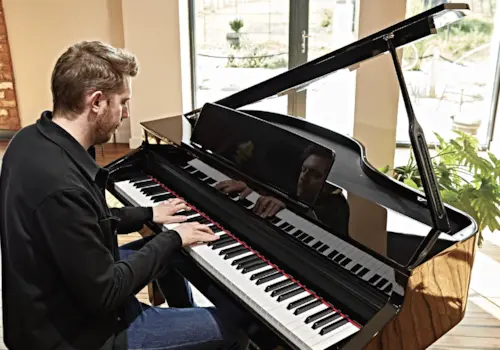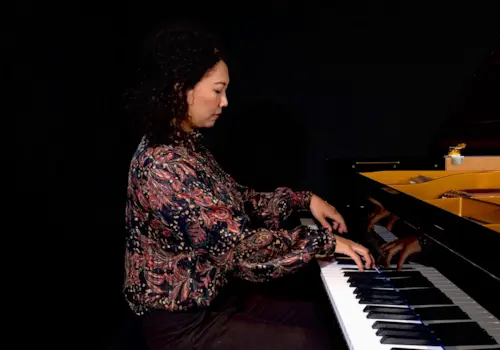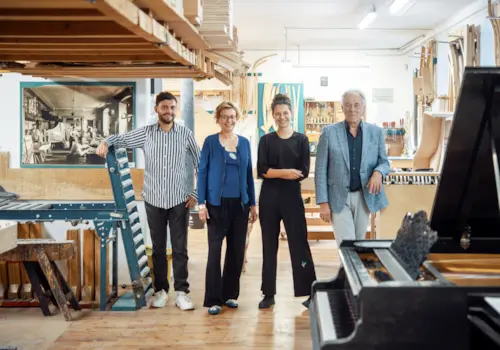RCM student Alec Coles-Aldridge explores unusual ways to play the piano.
On the 4th October 1885, The New York Times published an article reporting that a “community of young Italians” were experimenting with the use of the nose as a musical instrument. The story informs us that these Italians considered the nose capable of producing “the softest, sweetest melodies." Unfortunately, for those budding nose pioneers, the short article concludes “it is doubtful whether the new invention will add to the sum of human happiness.”
In addition to this amusing anecdote, the report also draws attention to a story pertaining to Wolfgang Amadeus Mozart’s use of the nose as an assistant to his hands while playing the piano. The story describes Mozart challenging Joseph Haydn to play a piece he had recently composed. Sitting at the harpsichord, Haydn played the music but, before finishing, stopped abruptly. Haydn had stumbled across a passage where the right hand was occupied in high treble clef region, the left in low bass clef and, presumably, the third arm in the middle of the harpsichord.
Confronted with such impossibility, Haydn declared “nobody can play this.” Mozart’s reply was simply “I can,” and he took a seat at the keyboard. Approaching the absurd passage, Mozart tilted towards the harpsichord and hammered the middle key with his nose. In jest, Haydn retorted “with a nose like yours it becomes easier.”
And the nose is not the only unusual way to play the piano; blindfolded, backwards, two pianos at once, whilst playing the violin and with pencils are all possible, as YouTube proves.
If the phrase “playing the piano” is taken in its broadest sense then pieces such as Philip Corner’s Piano Activities (1962) and La Monte Young’s Piano Piece for David Tudor #1 (1960) are both relevant. Corner’s piece asks the performers to destroy a piano over a number of days; performances usually consist of a mix of sledgehammers, crowbars and saws. Conversely, Young’s composition is much kinder to the piano, requiring a bucket of hay to be placed next to the instrument. Young directs the performer, stating, “bring a bale of hay and a bucket of water onto the stage for the piano to eat and drink. The performer may then feed the piano or leave it to eat by itself.”
If you really want to stretch the definition of “playing the piano” then you can include the piano arrangements of John Cage’s 4’33” (1952) which requires exactly 4 minutes and 33 seconds of silence from the performer.
Moving back into more conventional territory, the idea of putting objects inside a piano to alter the sound has been used in multiple pieces of music. Most famous of all is John Cage’s compositions for prepared piano. These pieces require objects such as screws, bolts, bamboo strips and pennies to be placed on the strings. Henry Cowell was an innovator too; he developed techniques for playing the piano that involved plucking the strings or flicking them with a fingernail.
Clearly, exactly how one should play the piano is very fluid, the possibilities are endless. With this in mind, have a go. See what sounds you can make; just ask for permission before learning Corner’s Piano Activities!
By Alec Coles-Aldridge. Alec is a student at the Royal College of Music studying for a Bachelor of Music Degree.








